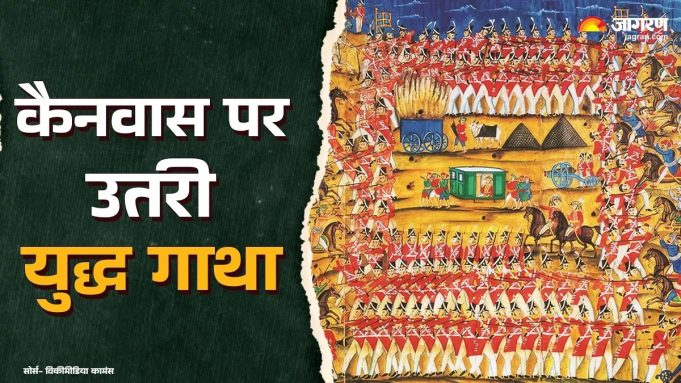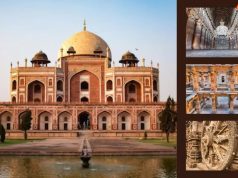As Tipu’s army was closing in on victory, his father and Sultan of Mysore, Hyder Ali, arrived with more troops and made the victory decisive. After the battle, about 200 enemy soldiers were captured and Baily was also taken prisoner.
Memento of Technical Achievements
The Polilur painting is one of three surviving copies of a mural on the wall of Tipu Sultan’s Daria Daulat Bagh palace, built to commemorate his victories. Today, the painting serves as a reminder of Tipu’s technical achievements.
 Use of rockets by the Mysore army. Wikimedia Commons
Use of rockets by the Mysore army. Wikimedia Commons
As a modern ruler of pre-colonial India, Tipu equipped his army with French-designed rifles and cannons, used rockets before European forces, and built an impregnable fort at Srirangapatna (Karnataka).
Not just military prowess, Tipu experimented with using water power to run machines, started the silk industry in Mysore, traded across the Persian Gulf, and built irrigation systems and dams across his territory.
The Battle of Pollilur is a pivotal moment in Indian history and bears testimony to the indelible legacy of Tipu and his army.
Live Depiction of War
The Mysore army at Pollilur was technically superior. Its soldiers were more disciplined and equipped with modern weapons than the East India Company’s army. This battle is very vividly and excitingly depicted in the painting, where we see how an ammunition explosion at a turn caused panic among the British troops.
 Famous painting of the Battle of Polissar. Wikimedia Commons
Famous painting of the Battle of Polissar. Wikimedia Commons
The bloodshed continued – severed heads, clanging of swords and blasts of cannons, the defeat of the completely surrounded British army is clearly visible on their faces. Time seems to stand still in two parts of the painting.
On one side, Bailey is nervous, biting his nails, trying to hide in his green palanquin. On the other side, Mysore Lancers on camels, elephants and horses are rushing towards the British red-coated soldiers who were protecting the Colonel.
Accompanied by his French companion, recognizable by his distinctive moustache. Part of the second stop is visible on the left side of the painting.
The French commander Lally is watching through his binoculars Hyder Ali and Tipu Sultan, who, riding in golden palanquins, are advancing towards the battlefield, confident of victory.
They march ahead with the musicians, spreading calm even amidst the bloodshed. The artist has depicted his royal patrons in stern profile, as if they are sitting in a garden and smelling the flowers, which reflects an ideal image of the Deccani nobles.
Tipu Sultan was the most effective opponent the East India Company ever faced. Tipu showed that Indians could fight back and win.
They could use European tactics against the Europeans and defeat them. The first time a European army was defeated in India was the Battle of Pollilur.
The Battle of Pollilur took place in 1780. It was a long conflict between the army of the Mysore Kingdom led by Hyder Ali and Tipu Sultan and the army of the British East India Company. This battle is included in the Second Anglo-Mysore War.









